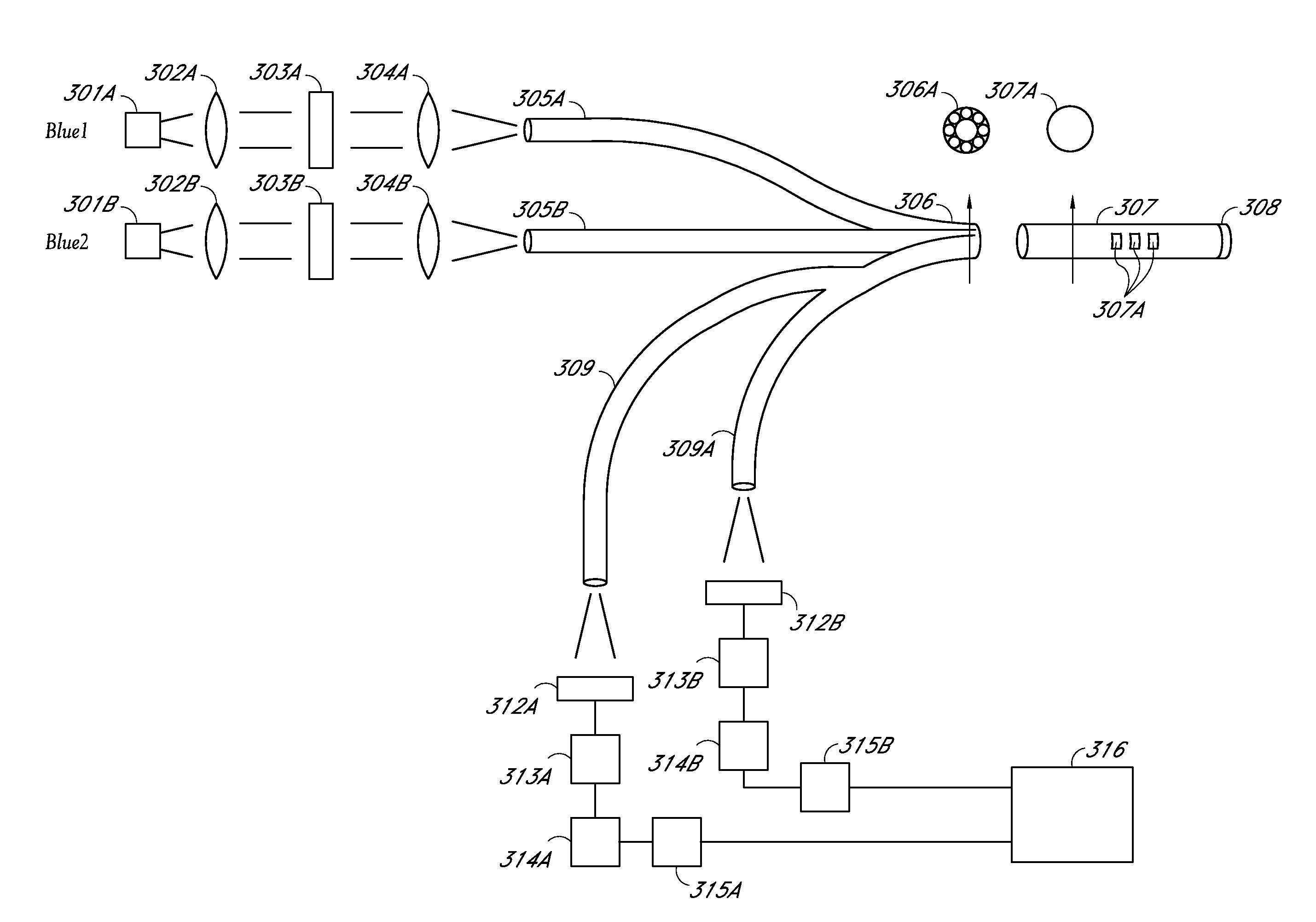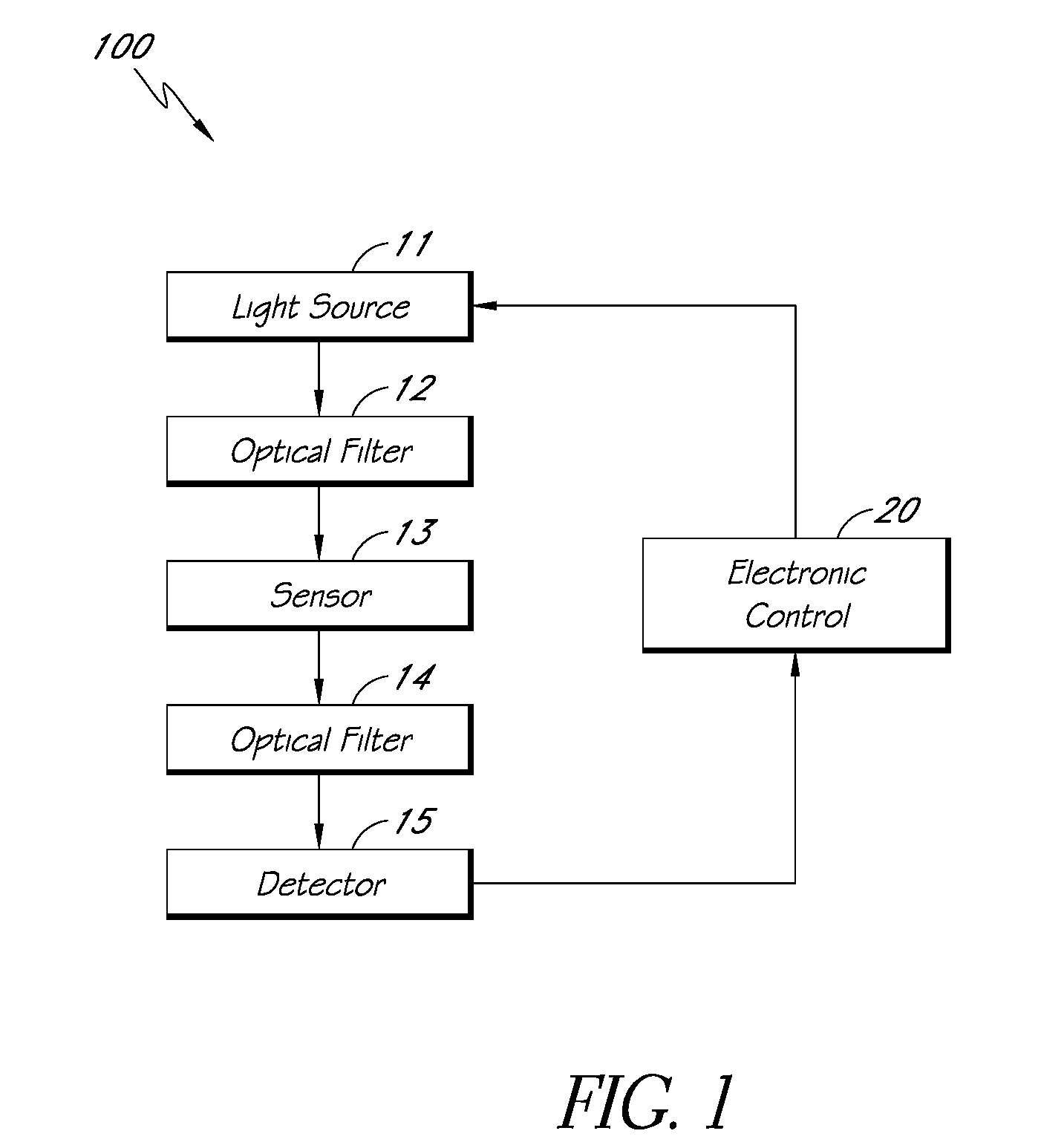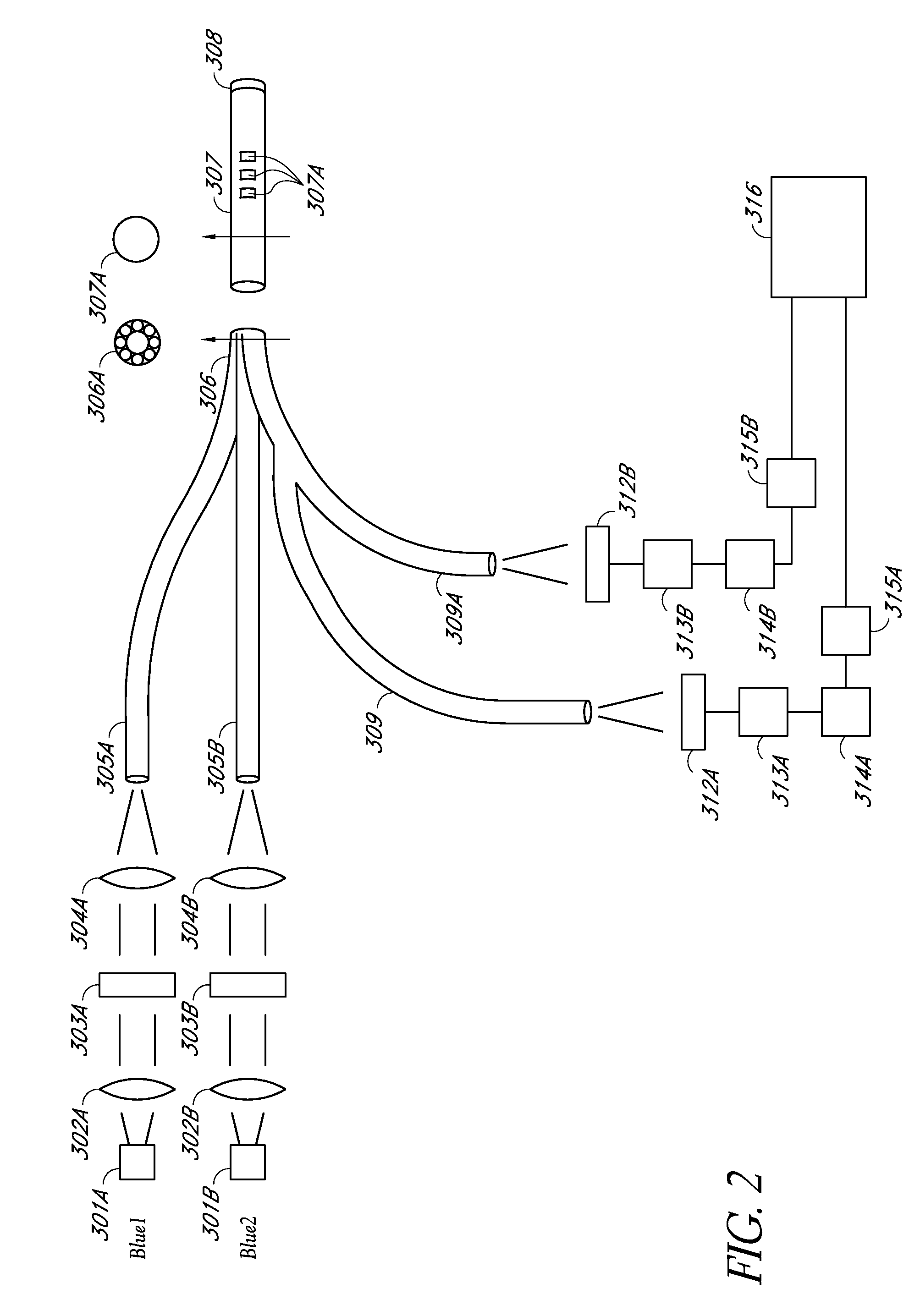Optical determination of ph and glucose
a technology of optical determination and glucose, applied in the field of optical sensors, can solve the problems of inability to develop and commercialize a practical system for in vivo monitoring, inconvenient patient care, complex electronic monitoring equipment,
- Summary
- Abstract
- Description
- Claims
- Application Information
AI Technical Summary
Benefits of technology
Problems solved by technology
Method used
Image
Examples
example 1
[0149]FIG. 3 shows an example of the excitation / absorption spectrum of a fluorescent dye, in this case HPTS. From the absorption spectra of the fluorescent dye acquired at different pHs, λacid, λbase and λiso can be determined. At a lower pH (e.g., more acidic condition), the peak at around 405 nm is higher than the peak at around 460 nm, and is therefore the absorption maximum for the acidic form of the fluorescent dye. At a higher pH (e.g., more basic condition), the peak at round 460 nm is higher than the peak at around 405 nm, therefore is the absorption maximum for the basic form of the fluorescent dye. The λiso would be the wavelength where the absorption is independent of the pH, and it would be, for example, around 422 nm for HPTS.
[0150]The first fluorescence emission intensity (Ix, which could be Iacid, Ibase or Iiso) at a emission wavelength, resulting from the irradiation at the first excitation wavelength (e.g., λacid, λbase or λiso), is then measured by the detector and...
example 2
HPTS / MABP4
[0151]FIG. 4 shows independence of ratiometric pH sensing using HPTS / MABP4 using the I(base) / I(iso) ratio from glucose concentration. The structure of MABP4 is:
[0152]
[0153]The data are plotted as a ratio of the fluorescence emission for corresponding to excitation at 454 nm (base) and 422 nm (isobestic point) vs. pH in various glucose concentrations. The changes in glucose concentrations have no discernable effects on the value of Ibase / Iiso at each specific pH. Thus the pH of the sample can be measured using a standard curve of Ix / Iy vs. pH, regardless of the polyhydroxyl compound concentration in the sample. By correlating or comparing the measured Ix / Iy to the standard curve, one may determine the pH of the sample being measured.
[0154]FIG. 5 shows glucose response curves for HPTS / MABP4 excited at 422 nm (isobestic point) at different pHs. By plotting the ratio of Ix / Iy at various glucose levels (I) to Ix / Iy at zero glucose concentration (I0) vs. glucose concentration, a...
example 3
SNARF-1
[0155]FIG. 6 shows the absorption spectra of SNARF-1 at different pHs in solution. SNARF is a tradename for a class of commercial dyes from Molecular Probes, Inc. These experiments were carried out using SNARF-1. FIGS. 7 and 8 show glucose response curves for SNARF-1 / 3,3′-oBBV in solution at different pHs determined at 514 nm excitation / 587 nm emission (FIG. 7), or at 514 nm excitation / 625 nm emission (FIG. 8). FIG. 9 shows ratiometric sensing of pH at different glucose concentrations with SNARF-1 / 3,3′-oBBV in solution using the I(base) / I(acid) ratio determined at a single excitation wavelength of 514 nm and emission wavelengths of 587 and 625 nm. Thus, the dual-dual dye SNARF-1 may be used operably coupled to the quencher 3,3′-oBBV (in solution) as a single exciter-dual emitter fluorophore to determine both pH ratiometrically and glucose.
PUM
| Property | Measurement | Unit |
|---|---|---|
| excitation wavelength | aaaaa | aaaaa |
| emission wavelengths | aaaaa | aaaaa |
| emission wavelengths | aaaaa | aaaaa |
Abstract
Description
Claims
Application Information
 Login to View More
Login to View More - R&D
- Intellectual Property
- Life Sciences
- Materials
- Tech Scout
- Unparalleled Data Quality
- Higher Quality Content
- 60% Fewer Hallucinations
Browse by: Latest US Patents, China's latest patents, Technical Efficacy Thesaurus, Application Domain, Technology Topic, Popular Technical Reports.
© 2025 PatSnap. All rights reserved.Legal|Privacy policy|Modern Slavery Act Transparency Statement|Sitemap|About US| Contact US: help@patsnap.com



